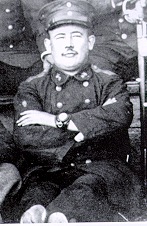One of my personal all time favorite watches, this watch is just cool looking! If you take a look at the watch you will notice that there is an extra hand instead of the 3 hands that depict hours, minutes, seconds. The Enicar Sherpa Guide feature one more hand its a 24 hour hand, while the hour hand makes a full revolution from 12:00 back to 12:00 every 12 hours the minute hand making a revolution every hour the 24 hour hand make a revolution only one time a day (24 hours). The reason for this is that the Sherpa Guide can track a second time zone. Which comes in handy for people who travel alot, you can put your time for lets say Los Angles and still know what time it is in London. Just by using the 24 hour hand and the internal bezel which features a 24 hours of the day on it.
The watch features a black dial, yellow and blue internal bezel with white, red and checkered colored hands, Date featured at 3:00 position. The face reads Enicar Sherpa Guide Automatic and, Swiss Made. Case Back reads 600. Sold As is and I have no idea what if any of the servicing history is, so as always I suggest a servicing. In Grade B condition. With scratches on the crystal .
Asking
$600






